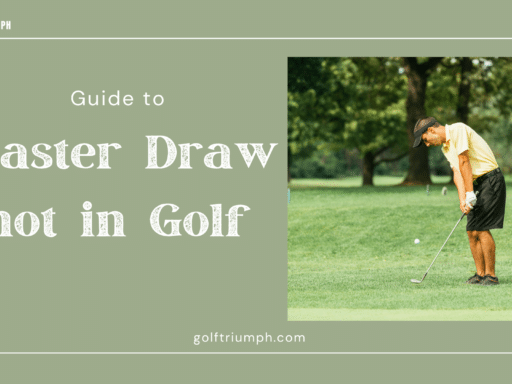
To play the perfect golf shot, you must know the golf ball diameter. Do you agree? Well, that certainly is true. Whether it’s your shotgun start golf, or any other golf trick you want to execute. What’s most important is understanding the history behind a golf ball’s sizes and dimensions. Moreover, how did the golf ball originate, and what is the background of its diameter? What is the standard size people use today? If you’re still wondering where you’ll get all this information from and are in confusion. You no longer have to worry. Let’s jump in together in this exhilarating experience and understand more about golfing size and history.
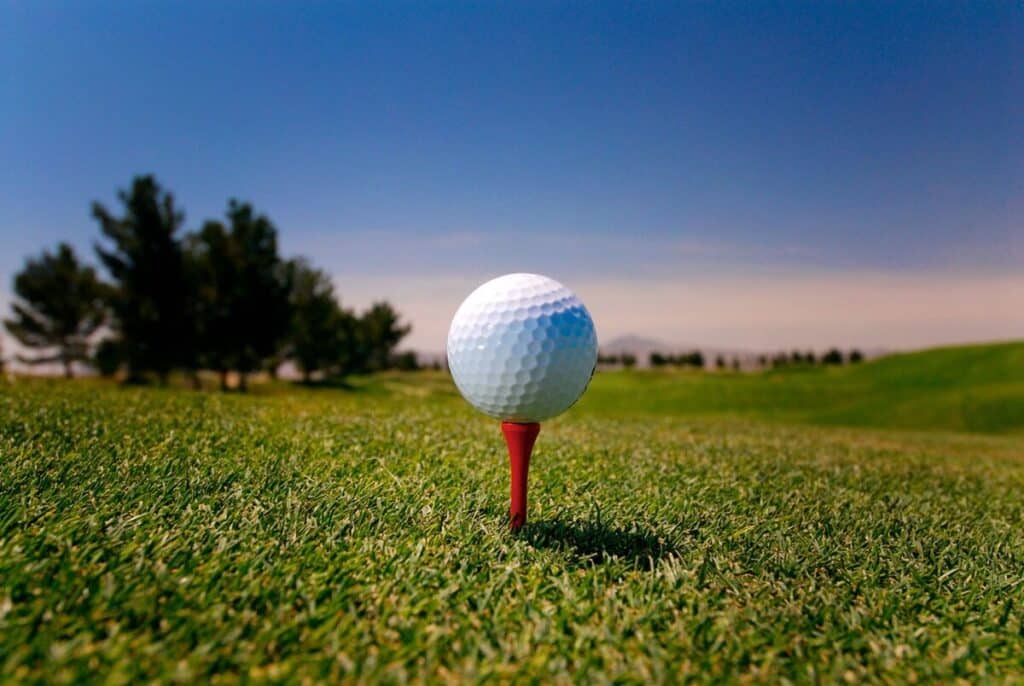
Golf Ball Diameter
Understanding the golf ball’s diameter is essential. Since it influences player strategy, equipment choices, and the ball’s aerodynamics and performance during play. Because of this uniform size, golfers and golf equipment makers may concentrate on other facets of ball technology, like internal design and materials, to improve performance and accommodate different playing styles. This size uniformity ensures a level playing field, which makes the modern game of golf both difficult and equitable.
The United States Golf Association (USGA) and the R&A determined the standard golf ball’s diameter in 1990. Which is 1.68 inches. This translates to about 4.27 millimeters in metric units. The standardization of golf ball size was an important turning point in the game’s history That helps in guaranteeing consistency and equity of play on all courses and in all competitions worldwide. The size of a golf ball has changed significantly over the ages, from the earliest models made of wood, feathers, and leather to the more sophisticated and standardized sizes we see today. Golf balls were available in different sizes before the 1990 agreement, with the British ball being smaller, measuring around 1.62 inches in diameter. Let us go back into history to gain more ideas about the various golf ball diameters and how they changed over time.
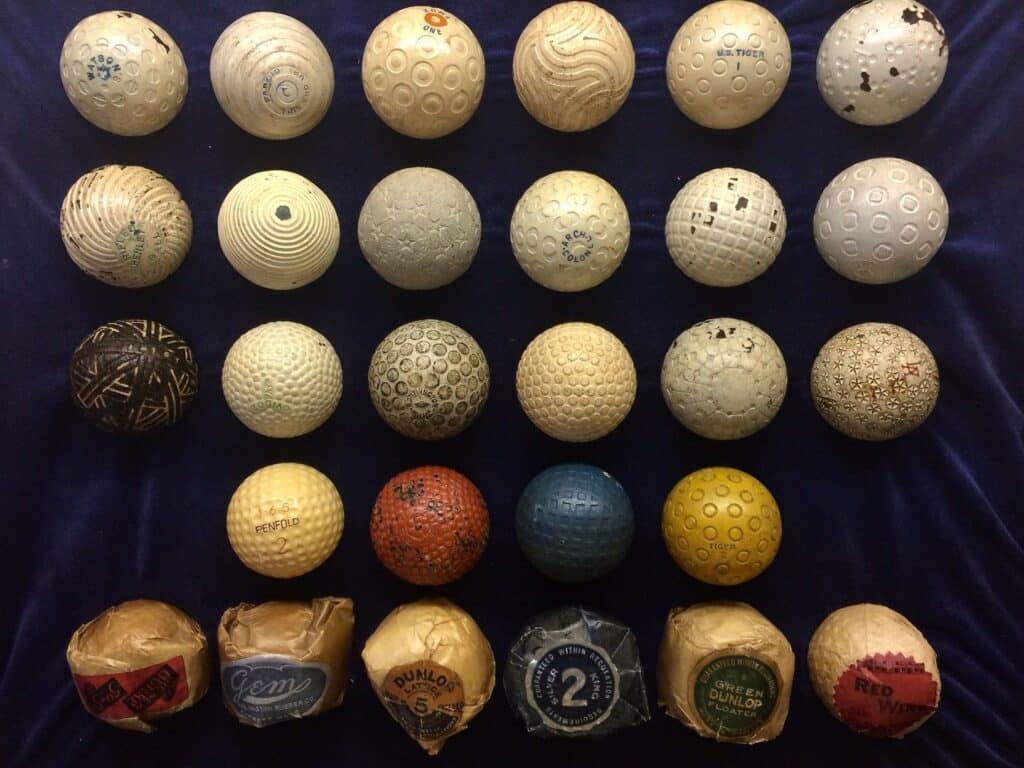
Diameter of Golf Ball: A History
Throughout the game’s history, the golf ball’s diameter has undergone multiple modifications to enhance gameplay and standardize play across various geographical areas.
Wooden Spoons
The first golf balls made of hardwoods like boxwood or beech were utilized in the early Scottish iterations of the game. The diameters of these hand-carved, highly variable balls typically ranged from 1.62 to 1.75 inches. The ball’s performance and flight were impacted by the size variation.
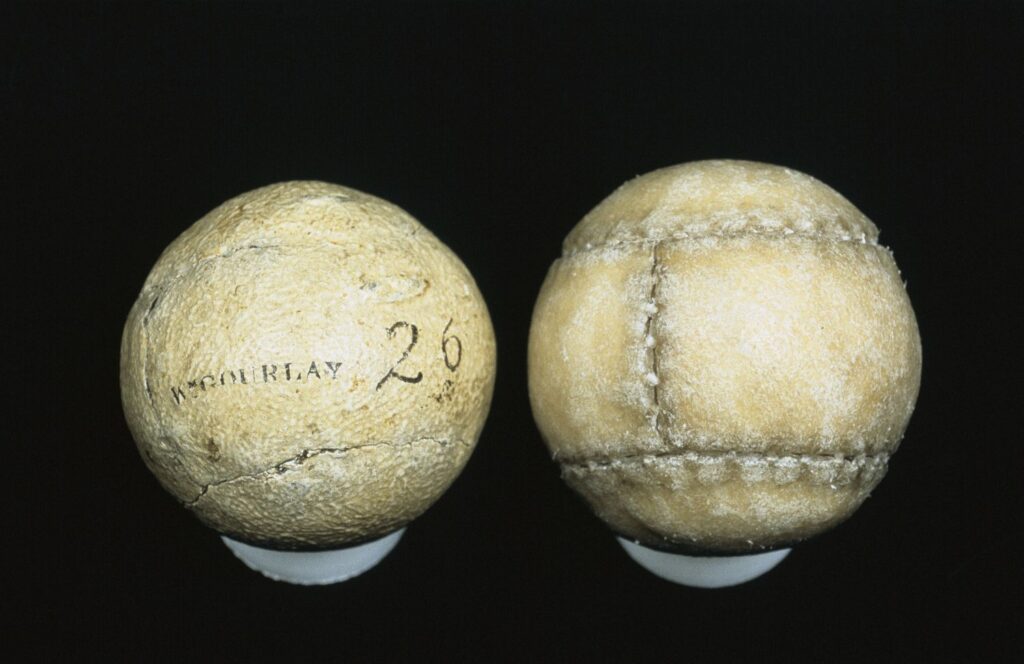
Featheries
The featherie ball first gained popularity as a substitute for wooden balls in the 18th Century. Feathers are stuffed into a wet leather bag, sewed tight, and air-dried to make them good. The feathers grew, and the leather contracted as the mixture dried, forming a stiff, tight ball. Feathers were less consistent than their wooden ancestors, though their diameters were usually between 1.62 and 1.75 inches.
The Guttie’s Introduction
The gutter golf ball, also known as gutta-percha, is in the middle of the 1800s. It is of dried sap from the sapodilla tree. Play was more consistent because gutter balls were more straightforward to produce consistently. These balls kept a regular diameter of around 1.68 inches and could be shaped into almost perfect spheres.

Developments and Standardization in the 20th Century
Balls with Rubber Core
Golf balls with rubber cores were first made available in the early 20th Century, prompted by a century of size uniformity. The development of rubber technology made it possible for producers to create even more homogeneous and consistent balls.
Incompatible Standards
The British R&A (Royal and Ancient Golf Club of St Andrews) established a minimum golf ball diameter of 1.62 inches by 1930. However, in 1951, the United States Golf Association (USGA) established a 1.68-inch standard. As a result of these disparate regulations, the United States and Britain had different ball sizes for many years.
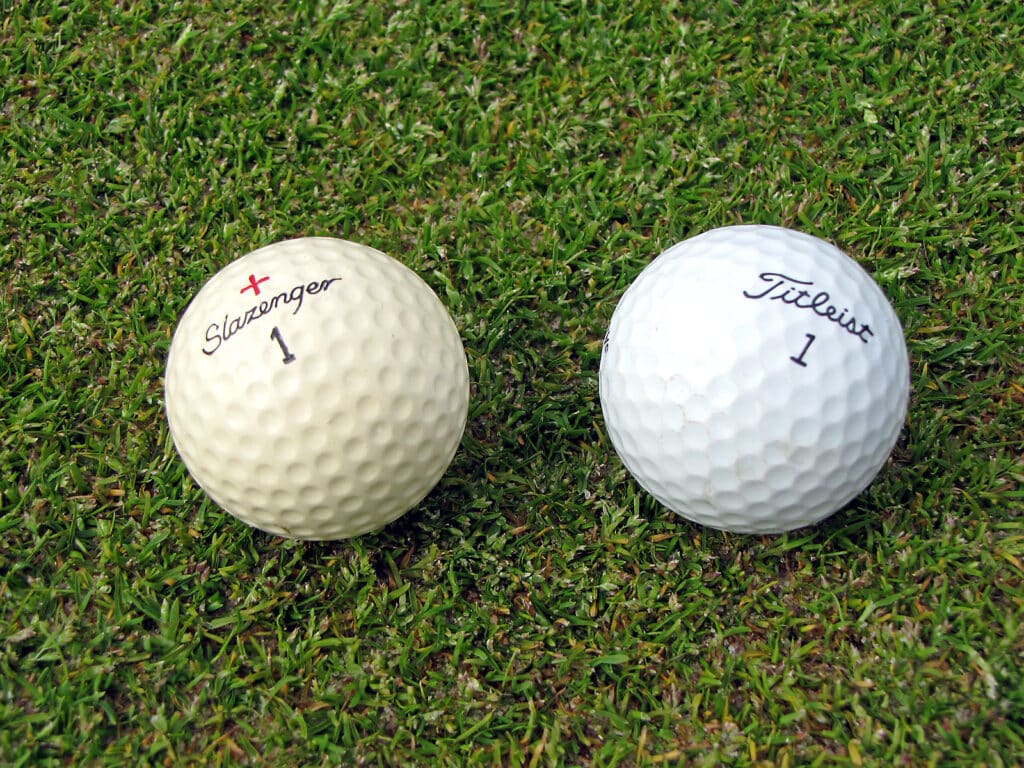
Standardization of Diameter Measurements
The R&A and USGA did not agree to standardize the golf ball diameter worldwide until 1990. The minimum diameter was established at 1.68 inches, a requirement that remains in force today. This agreement ended the age of disparate national standards, and the game became universally standardized.
The evolution of golf from a primitive game played on Scottish links to a highly controlled sport played worldwide is reflected in the golf ball’s diameter. The uniformity of golf ball dimensions has been essential in guaranteeing equitable and uniform competition in all game tiers.
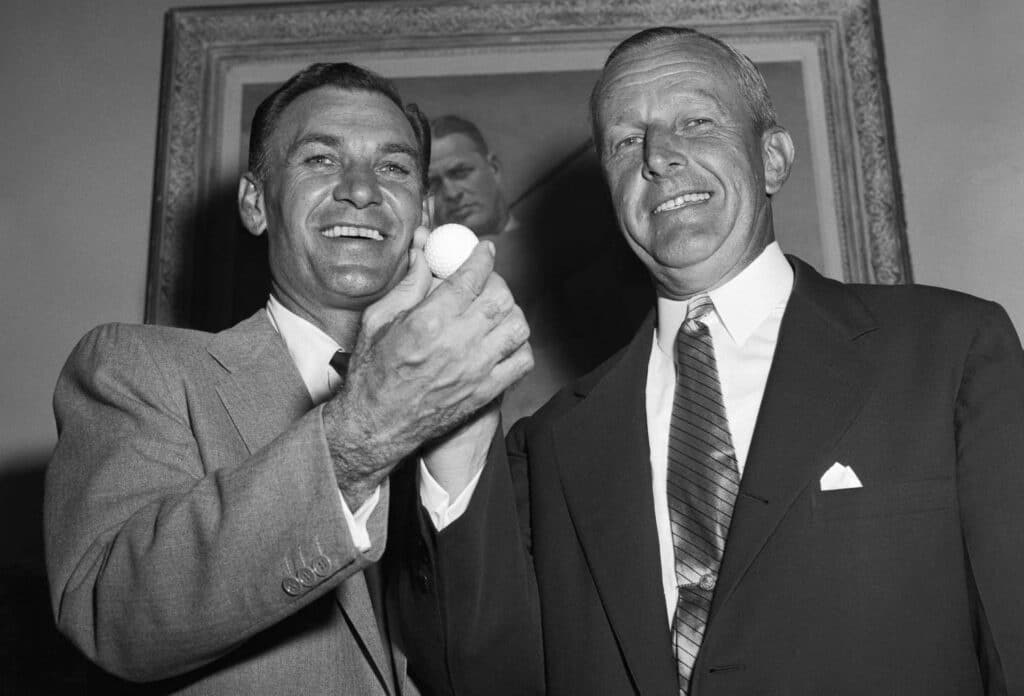
American Golf Ball Diameter and Size
The United States Golf Association (USGA) has tight guidelines that determine the dimension and size requirements for the American golf ball. These regulations stipulate that the golf ball’s minimum diameter, or 42.67 millimeters, is 1.680 inches. This specification guarantees consistency throughout the sport, impacting ball flight dynamics and behavior on the golf course and design. The ball’s maximum weight of 1.620 ounces, or 45.93 grams, is another restriction on its weight that affects its stability, speed, and range.
This size and weight combination is essential to standardize the equipment used in tournament play and guarantee that the ball satisfies performance standards judged appropriate for fair competition. Producers such as Titleist, whose Pro V1 model is well-known, put their products through a rigorous testing process to ensure they fulfill these requirements. This guarantees that the golf balls follow USGA regulations and are of consistent quality and performance for usage in amateur and professional settings.
https://mygolfspy.com/news-opinion/penfold-golf-balls-another-direct-to-consumer-brand/British Golf Ball Diameter
On the other hand, before the 1990s, the British golf ball, also known as the British ball, was governed by distinct rules established by the Royal and Ancient Golf Club (R&A). The R&A. permitted a ball more minor than the 1.68-inch diameter required by the USGA. These British balls typically had a diameter of 1.62 inches or roughly 41.15 millimeters.
This smaller size would have provided alternative flying characteristics, such as a more extended range and a higher trajectory, which could be helpful in some playing situations, especially on British courses renowned for their distinctive topography and meteorological difficulties. The disparity in ball size between American and British standards represented different ways of looking at the game; these differences affected everything from playing tactics to equipment design, and in the late 20th century, the USGA and R&A aligned their ball size regulations to encourage consistency in the sport throughout the world.

Golf Ball Diameter of Today: The Standard Size
What is the diameter of a golf ball? That must be the question in your mind right now.
Golf has always been a tradition-bound game with rigid rules, particularly about the equipment used in play. The golf ball, whose weight and proportions have been hotly contested. Moreover, regulated throughout the sport’s history, is a crucial component of this apparatus. To maintain consistency and fair play in the game, regulating authorities now tightly restrict the weight and size of golf balls.
Normalized Measurements and Weight Diameter
Golf balls must have a specified diameter of 1.680 inches (42.67 mm). The USGA and the R&A, once members of The Royal and Ancient Golf Club of St Andrews, are the leading governing bodies that uphold this rule. This size guarantees that the ball will be sufficiently large to avoid falling through the 4.25-inch-diameter golf hole on the green.

Volume of Golf Ball
A golf ball’s maximum permitted weight is 1.620 ounces (45.93 grams). The weight restriction contributes to the consistency of the ball’s flight path, speed, and distance when struck by a golf club.
Size’s Effect on Ball Flight
Its diameter can significantly influence the golf ball’s flight characteristics. A smaller ball can travel farther because it usually faces less air resistance. This was one of the factors that contributed to the smaller British ball’s initial appeal as opposed to the American norm. Nonetheless, adopting the 1.680-inch golf ball standard balances the requirement for consistent performance and equitable competition at all levels of the sport.

Present-day Producers of Golf Balls
Prominent manufacturers like Titleist, whose Pro V1 model is a top pick for amateur and professional golfers, rigorously adhere to these rules. Thanks to its solid core and precise diameter, the Titleist Pro V1 is made to perform as well as possible while staying within the law.
Golf Ball and Competition Play
Using golf balls of the same size and weight is essential when competing in tournaments. ‘Non-conforming’ balls don’t follow R&A and USGA regulations; using them in official competition is forbidden. This guarantees that no player benefits unfairly from equipment that doesn’t adhere to the rules.
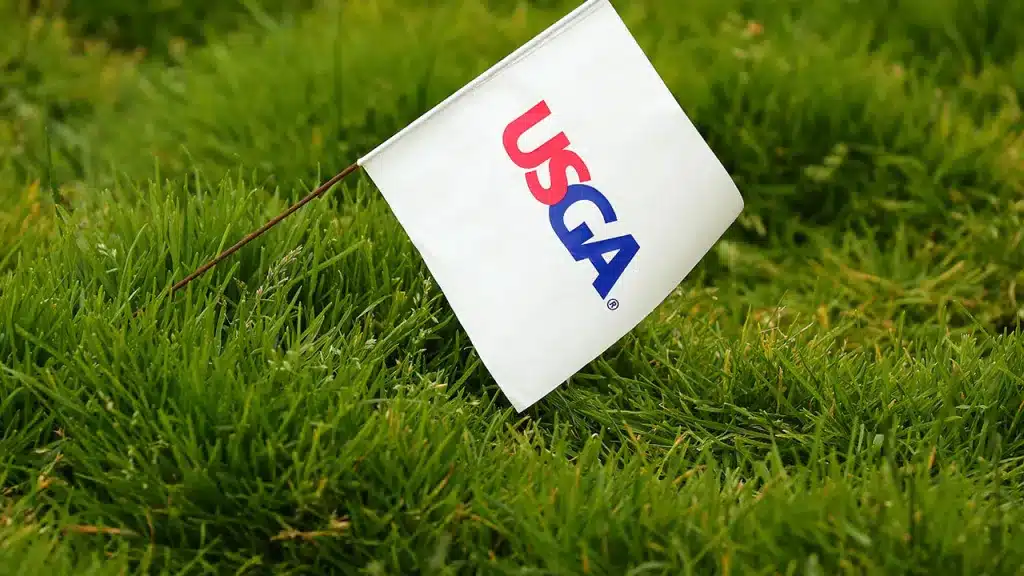
The Function of R&A and USGA
The USGA and R&A are essential players when creating and revising golf rules, including equipment requirements. Their cooperation contributes to the upkeep of a standard set of golf regulations globally, which is necessary given the game’s international scope. These organizations are dedicated to maintaining the integrity and history of golf by ensuring that technological improvements for golf equipment are consistent with the skills and difficulties that come with the game.
More than merely technical details, a golf ball’s weight and circumference are essential to the game’s history and fairness. The standard golf ball’s 1.680-inch diameter and 1.620-ounce weight are intended to strike a balance between performance and consistency, guaranteeing that skill will always be the primary element in a player’s success. The USGA, R&A, and other regulatory organizations’ continued involvement in upholding these standards is essential to the future of golf as the game continues to change.
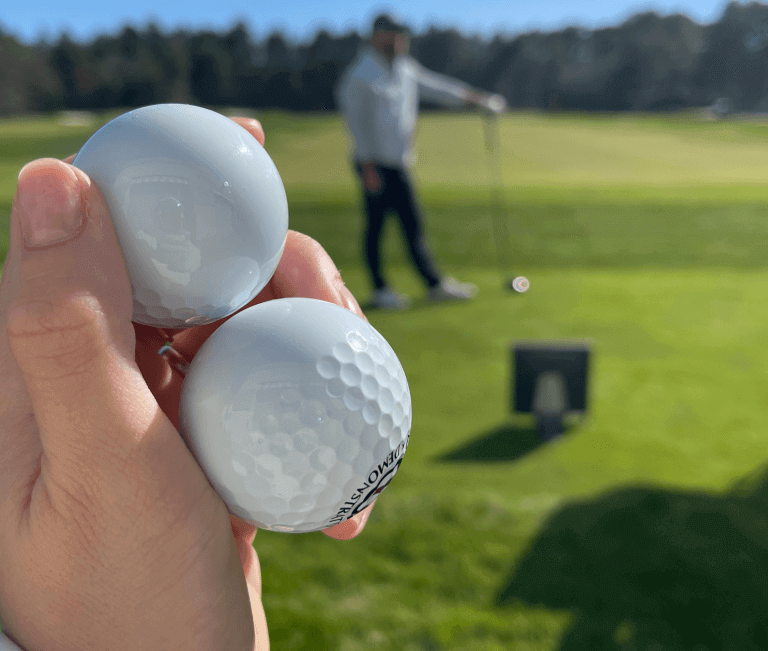
Understanding Golf Ball Dimples
Golf ball dimples significantly impact the ball’s aerodynamics and flight. A golf ball’s surface features called dimples are carefully crafted depressions that increase lift and decrease drag when in flight. When compared to a ball with a smooth surface, dimples allow for a softer and more stable trajectory by generating turbulence around the ball as it travels through the air. Manufacturers can obtain diverse flight behaviors and performance qualities suited to particular playing situations and player preferences by adjusting the dimples’ count, depth, and distribution. As a result, the design and pattern of these dimples can differ significantly throughout manufacturers.
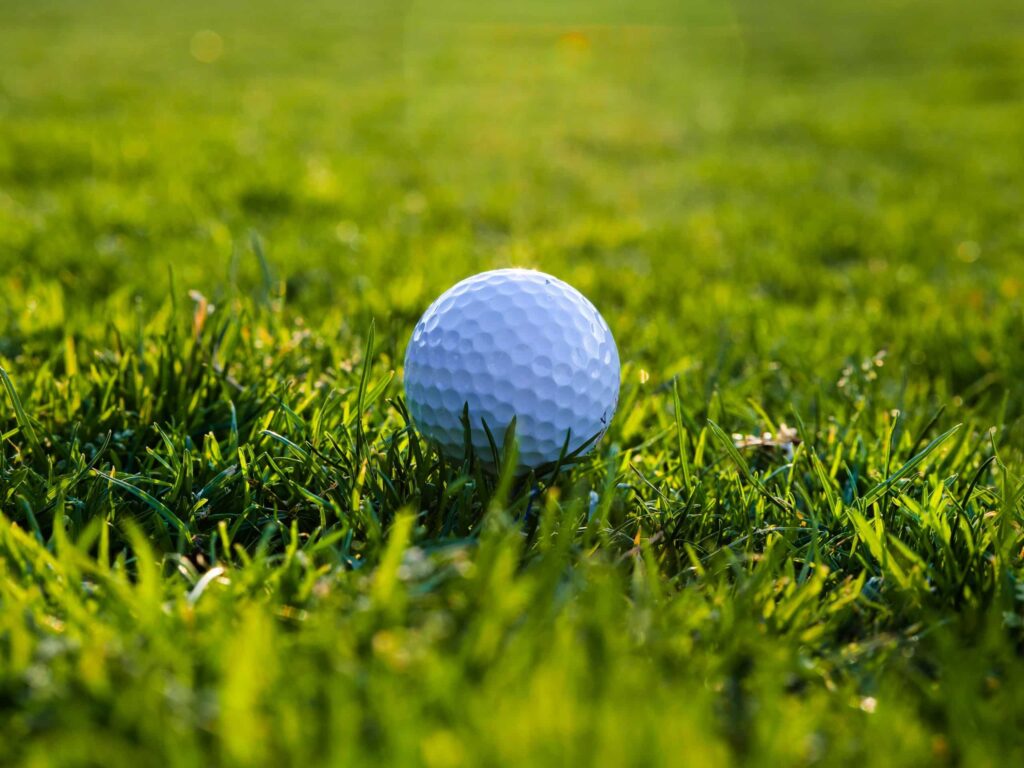
Dimples’ Effect on Golf Ball Diameter
The introduction or distribution of dimples does not directly impact the diameter of a golf ball. The regulations of golf dictate the standard diameter of a golf ball, stating that it cannot be smaller than 1.680 inches (42.67 mm) in diameter. Without changing the ball’s total size, the dimples’ depth and overall design can affect its surface area and aerodynamic qualities. To optimize performance within these restricted parameters, manufacturers perfect the number and design of dimples, ensuring that every ball offers the perfect balance of distance, stability, and control.
Diameter of a Golf Ball in Inches
According to USGA regulations, a typical golf ball’s diameter is around 1.68 inches. This is a critical size for proper golf competitions.
The diameter of a Golf Ball in cm
According to USGA regulations, a normal golf ball’s diameter is roughly 4.27 cm. This size guarantees uniformity and standardization in the game of golf.
Diameter of a Golf Ball in mm
According to USGA regulations, a normal golf ball’s diameter is roughly 42.7 millimeters.
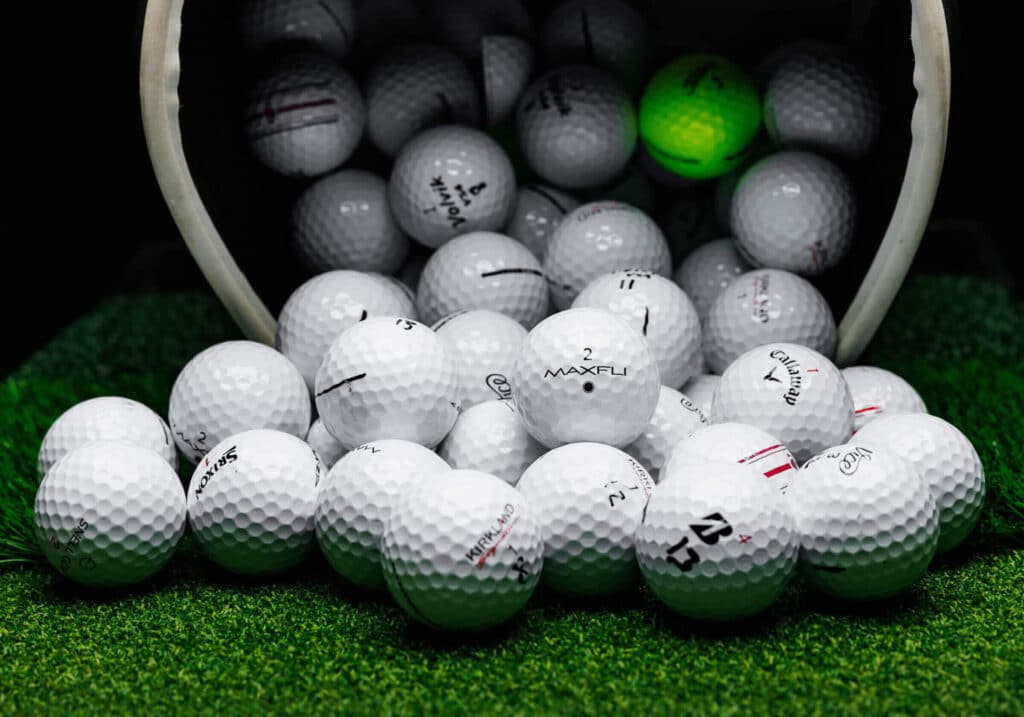
Two Piece, Three Piece, and Multilayer Golf Ball Diameter
Two Piece Golf Ball Diameter
With a diameter of 1.68 inches, this two-piece golf ball is carefully engineered for maximum aerodynamics and performance. This site was purposefully intended to improve the ball’s distance traveled and stability in the air, making it especially ideal for players with slower swing rates. The diameter ensures effective energy transmission upon impact and is a critical factor in how the ball interacts with the club. Because of its sturdy Surlyn cover construction, the ball is resistant to abrasion and provides long-lasting playability across multiple rounds. This makes it a favorite due to its affordability and dependability among regular golfers.

Three Piece Golf Ball Diameter
Three-piece golf balls have a consistent diameter of 1.68 inches or 42.67 millimeters. And are painstakingly made to fulfill precise performance requirements. Maintaining consistency and fairness in the game depends on all three-piece golf balls meeting the size limits stipulated by golf regulations, which is made possible by their consistent diameter. The golf ball’s size greatly influences its aerodynamic characteristics and overall performance.
The external diameter of three-piece golf balls is constantly focused during manufacturing to ensure compliance and performance standards are met, even with their complex internal structure consisting of a small inner core, a durable urethane cover, and an intermediate layer designed to maximize energy transfer and spin. The ball’s diameter influences its interaction with the golf club at the point of impact, affecting spin, trajectory, and distance traveled. The three-piece golf ball is a popular option for players looking to improve their game and score higher because it provides a perfect blend of excellent spin control and ample power for those who want to hit the ball with accuracy and control. The mix of superior internal engineering and uniform external measurements highlights this complicated design and technological improvements in current golf ball production.

Multilayer Golf Ball Diameter
Expert and professional golfers like multilayer balls with a typical diameter of 1.68 inches or 42.67 millimeters. This consistent size is essential to guarantee that the balls fulfill the official golf regulations, which specify the acceptable dimensions for competition and professional play. These balls’ diameters are carefully engineered to combine playability and performance. These golf balls maintain the conventional diameter even though their intricate interior structure has multiple layers and a tiny core. Because of this size constancy, golfers can expect a predictable interaction between the ball and the golf club. Players have more control, spin, and distance thanks to the outer diameter and the inner layer technology. This dimension is critical since it affects the ball’s aerodynamics, speed, trajectory, and overall performance during play.

https://www.skysports.com/golf/news/12176/13024060/golf-ball-rollback-key-questions-on-what-is-happening-why-change-is-coming-and-how-it-will-affect-youDiameter Golf Ball: Final Thoughts
Wrapping up the world of golfing ball sizes and golf ball diameter and observing how this critical piece of gear has changed. Moreover, becoming more standardized over time is incredible. The diameter of a golf ball has changed over time. From the different sizes found in early American and British golf to the standard proportions used in modern golf, with the USGA and R&A establishing the diameter as 1.680 inches (42.67 mm) worldwide. Regardless of the unit of measurement, inches, centimeters, or millimeters, this standard size maximizes ball performance and flight during competition. To meet the minimum weight and size requirements, golf balls like the Titleist Pro V1 are an excellent example of how this standard diameter is used with a solid core and multilayer design.
In the end, knowing a golf ball’s diameter, measured in centimeters, inches, or millimeters. It allows players and manufacturers to comply with the sport’s strict regulations and guarantees that it stays fair and competitive.



